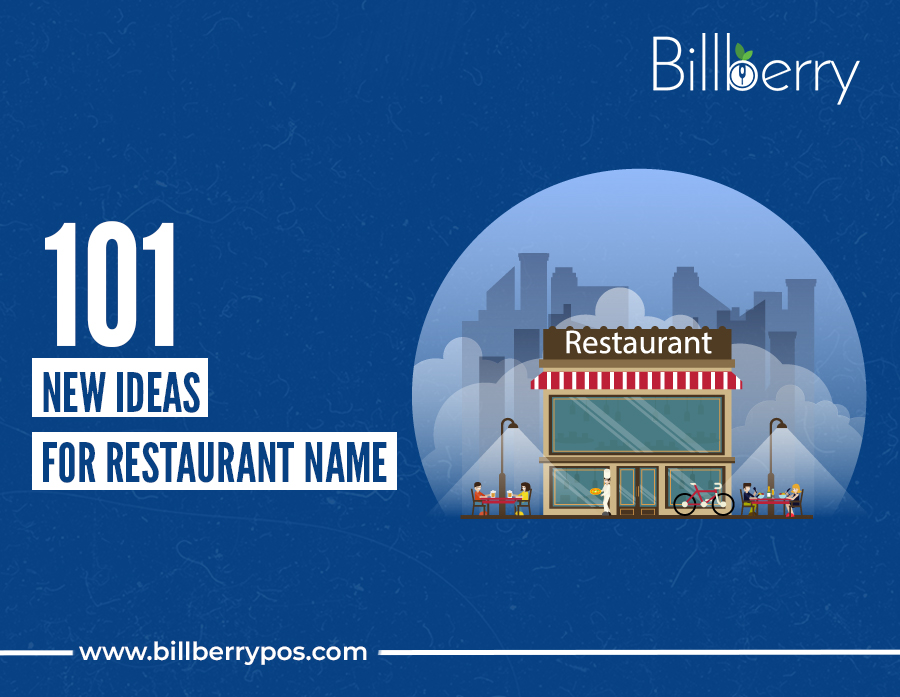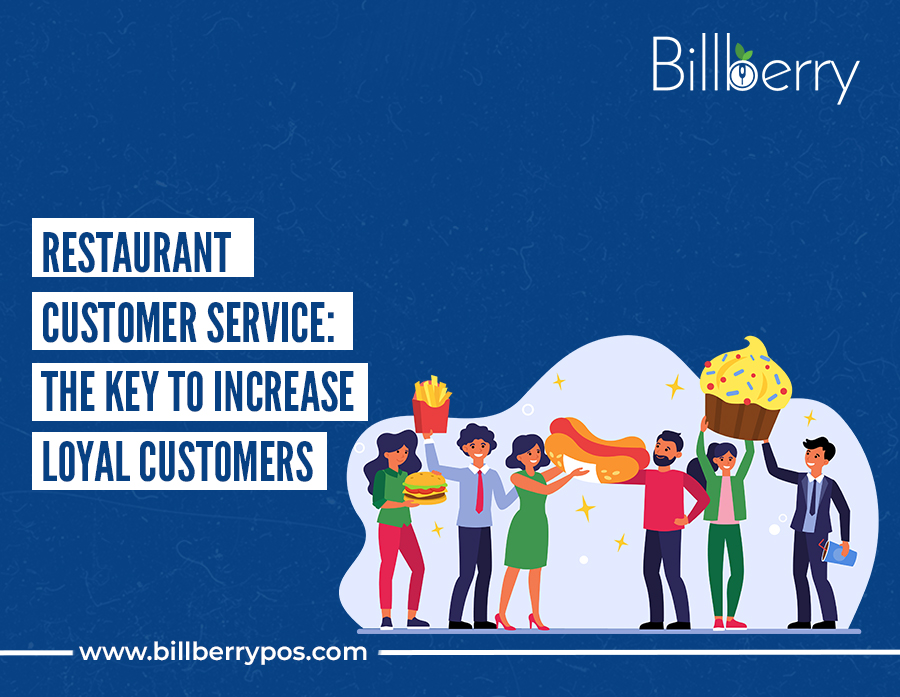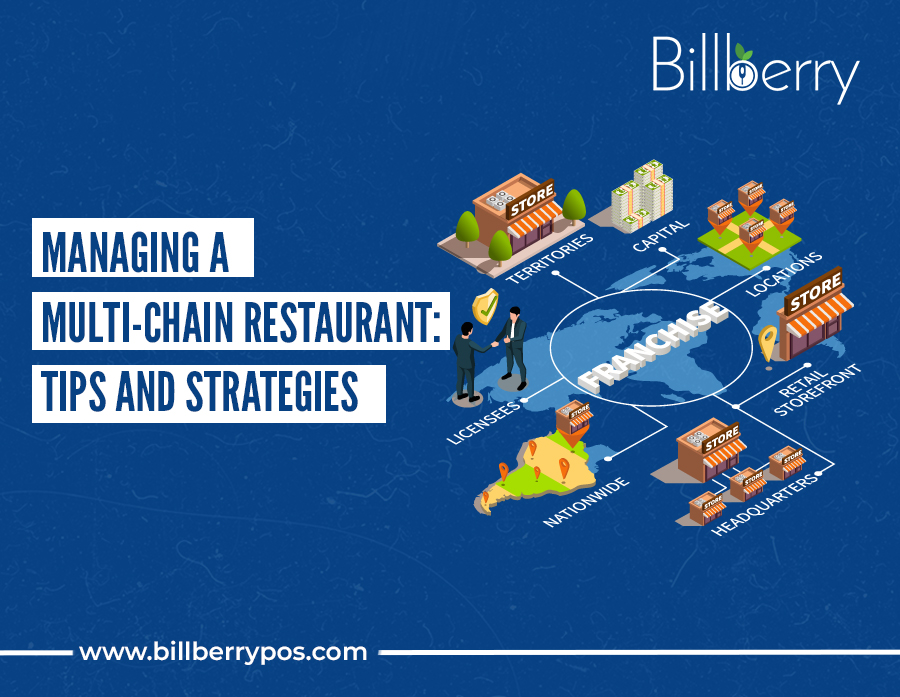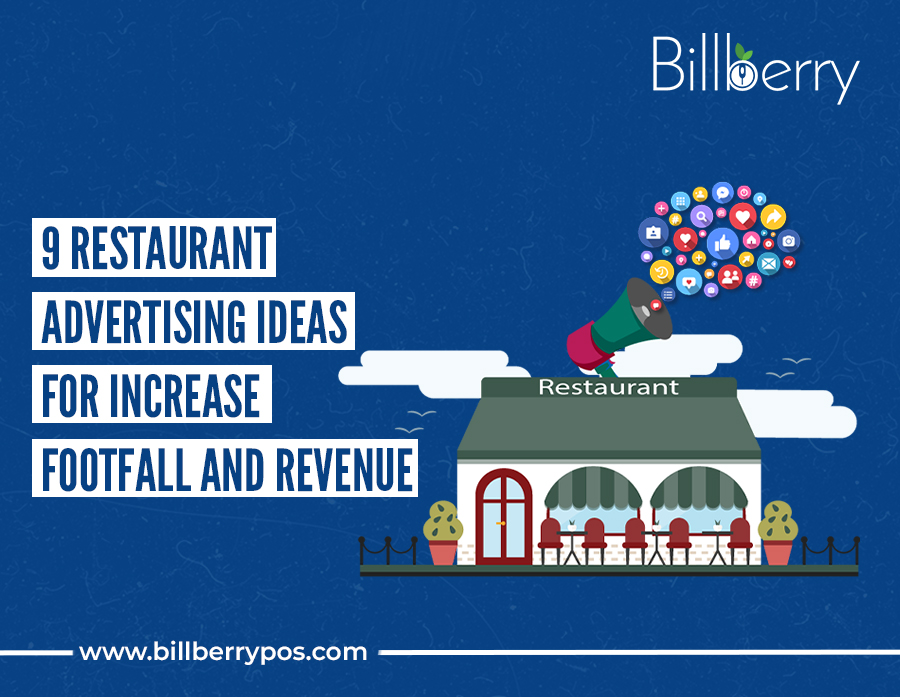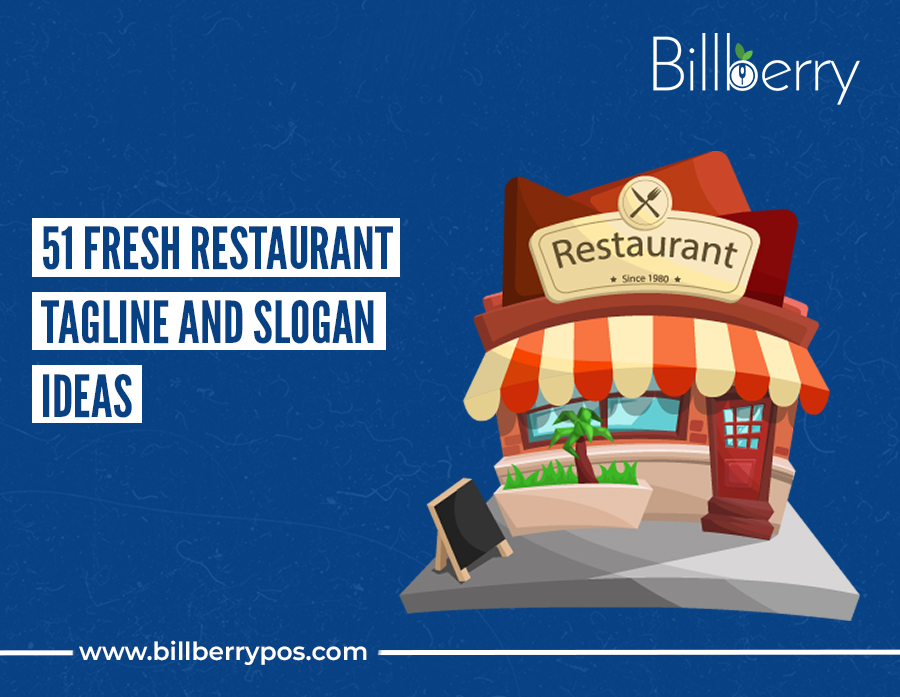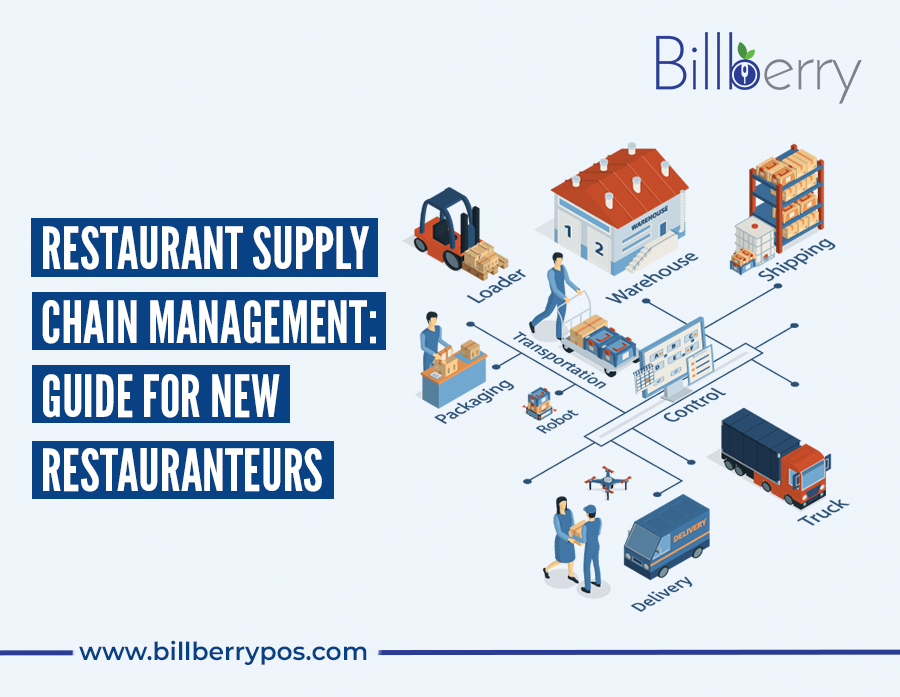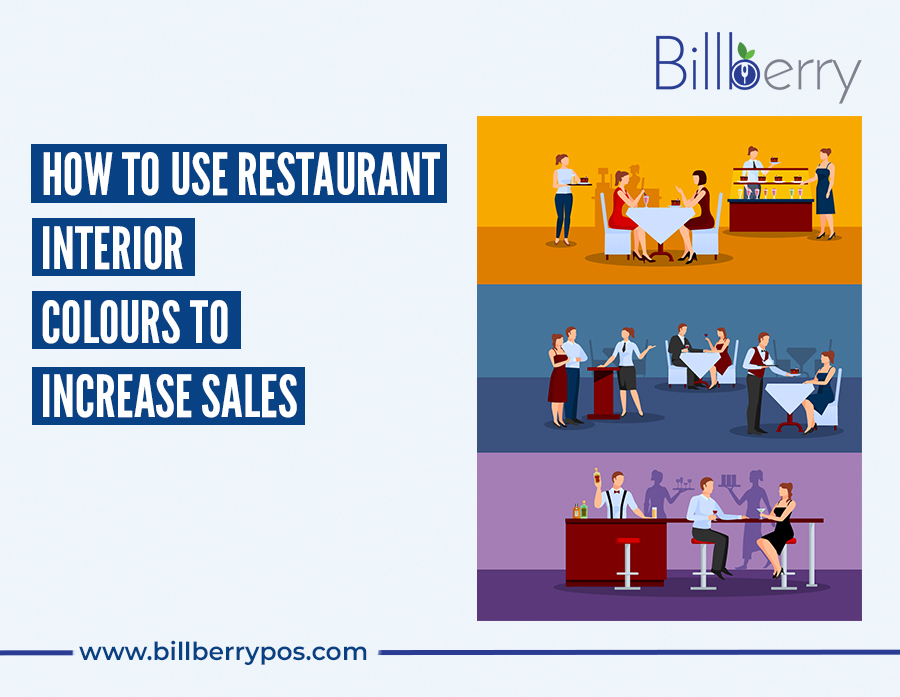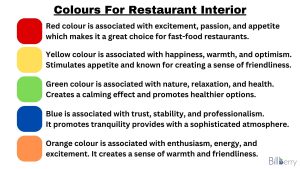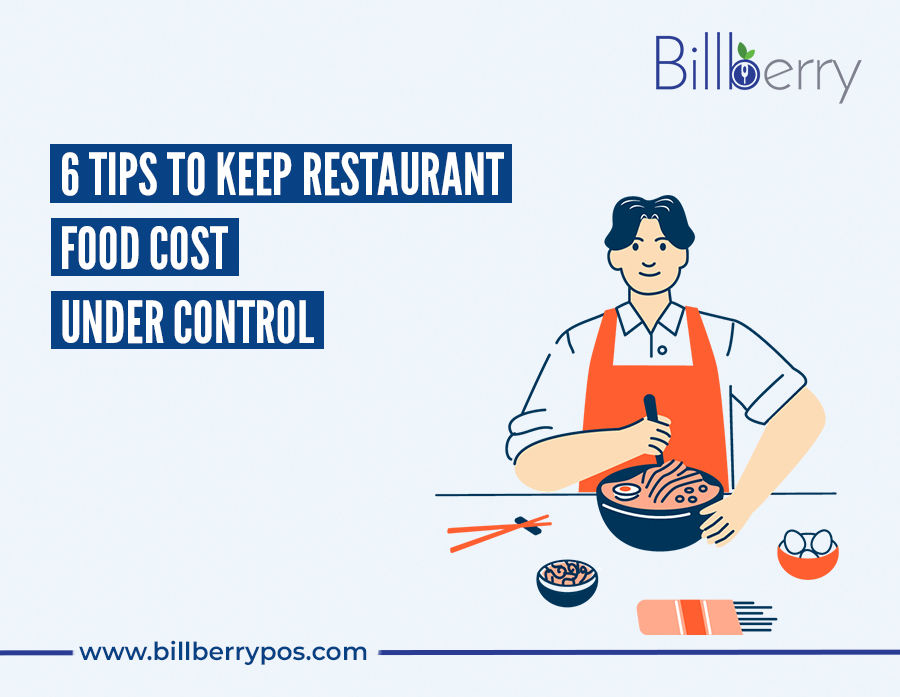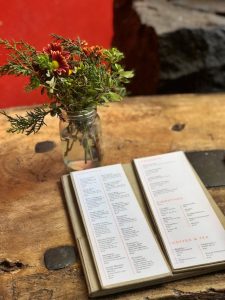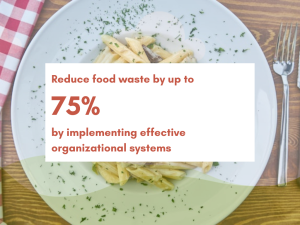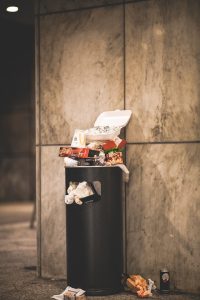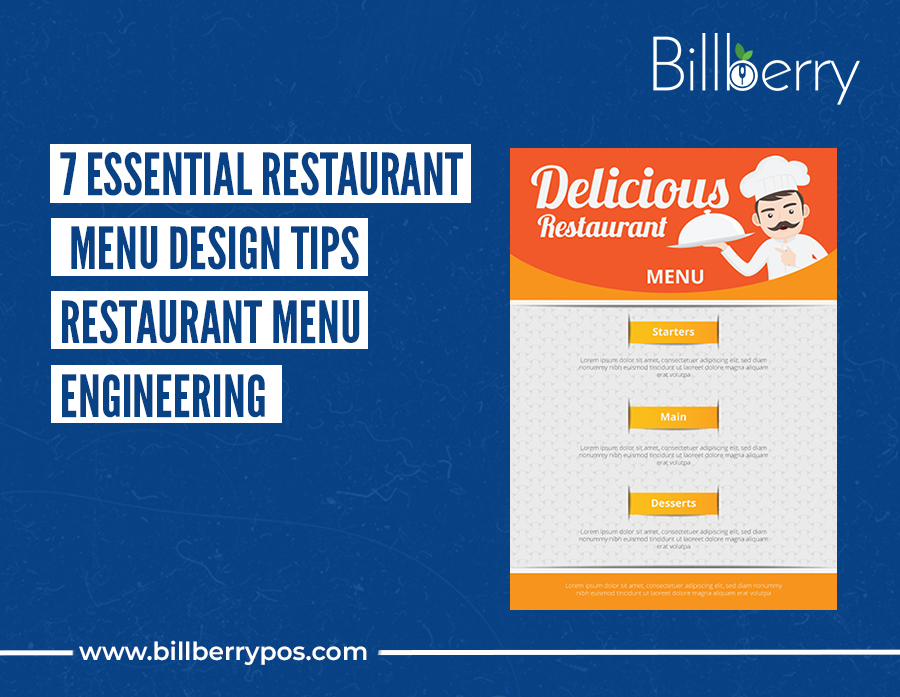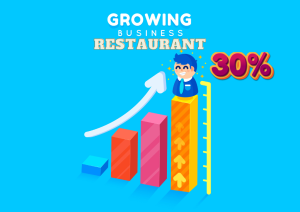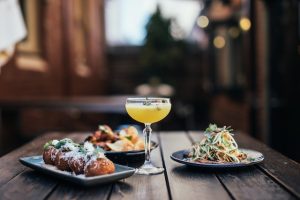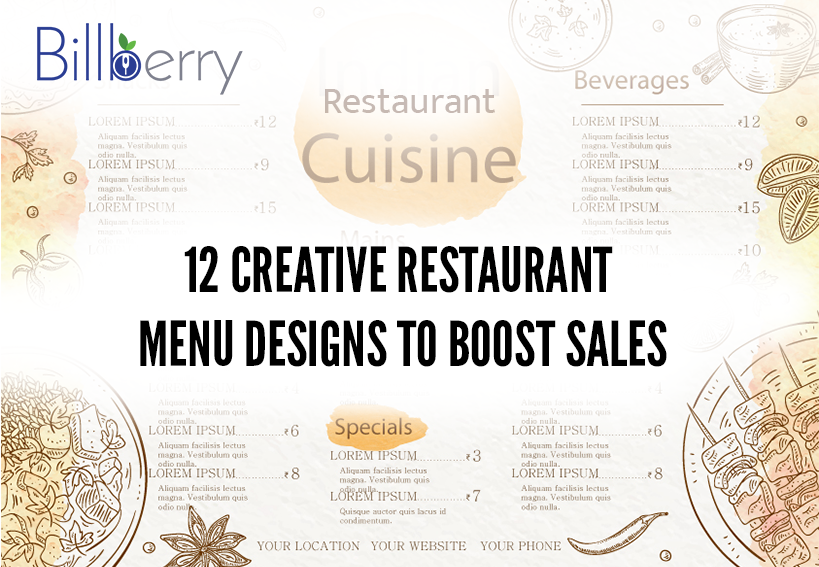An aesthetically pleasing restaurant menu design can significantly enhance restaurant sales by enticing customers to try new dishes, simplifying the ordering process, and creating a positive first impression.
The use of visually appealing graphics, unique font styles, and an organized layout can provide customers with a glimpse of the restaurant’s personality and style, ultimately leading to an increase in customer attraction.
In addition, the strategic placement of high-profit items, descriptive language, and compelling food photography can guide customer decision-making and encourage them to order more.
A well-designed menu that is easy to navigate and has transparent pricing can also reduce customer confusion and aid in swift decision-making eventually increasing restaurant sales!
Restaurant Management System – Free Demo
As a result, investing in creative menu design can lead to increased customer satisfaction, loyalty, and sales, ultimately making it a valuable investment for any restaurant.
Below we have listed 13 creative and enticing restaurant menu designs that you can use for you restaurant business!
Future Of Restaurants With The Elements Of Augmented Reality In Restaurant Menus
1. Restaurant Menu Card Design With Deep Burgundy Colour and Golden Fonts
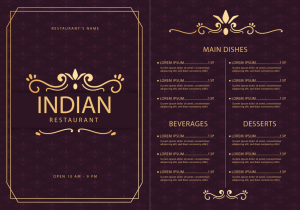
A deep burgundy colour with golden fonts on the restaurant menu card can be an effective way to entice restaurant-goers.
The deep burgundy hue exudes an air of opulence and refinement, evoking feelings of indulgence and sophistication.
The addition of golden fonts provides an eye-catching contrast that accentuates the menu’s luxurious character.
This interplay of colours creates a distinctive and memorable design that distinguishes itself from other dining establishments, making the restaurant more attractive to potential patrons.
Furthermore, the deep burgundy hue is known to stimulate the appetite, which may lead customers to order more items.
The golden fonts convey a sense of premium quality, making the menu appear more valuable, which can enhance the perception of the restaurant and its offerings.
Ultimately, this colour scheme can elevate the customer’s dining experience, leading to heightened sales and a positive brand image for the restaurant.
Restaurant Billing Software – Free Demo
2. Restaurant Menu Card Design With Black, Cream, and Popping Red Colour
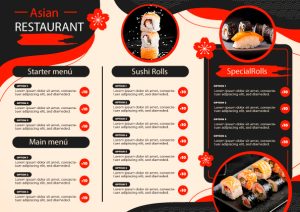
Crafting a restaurant menu card that is both engaging and appealing is a crucial element for ensuring a successful dining experience.
The combination of black, cream, and popping red colour can create a striking and inviting menu design that entices customers to explore the offerings further.
The classic and elegant look of black and cream is elevated by the addition of the popping red hue, which adds a dynamic and exciting element to the design.
How Restaurant Management Checklist Help Scale A Restaurant Business?
This vivid colour can be strategically placed to draw attention to key menu items, providing customers with a clear sense of direction and emphasis on the most important parts of the menu.
The black and cream background provides a sleek and sophisticated canvas for showcasing high-quality food photography, which can further entice customers to explore the menu and increase their desire to order.
Additionally, the inclusion of red colour can instill a sense of urgency and drive customers to make faster decisions.
This versatile colour combination can suit a broad range of restaurants, from upscale establishments to casual dining experiences, elevating the ambiance and enhancing customer satisfaction.
Ultimately, the use of black, cream, and popping red colour can contribute to an exciting and modern menu design, leading to increased sales and a positive customer experience.
Restaurant POS Software – Free Demo
3. Restaurant Menu Card Design With Black Background, Yellow Fonts, and Food Vectors
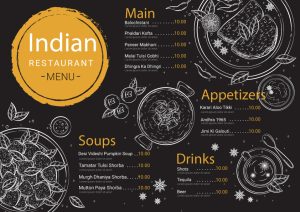
A restaurant menu card designed with a black background, yellow fonts, and artistic food vectors can result in a stunning and captivating visual experience for customers.
The black background provides a modern and polished backdrop for the menu, while the yellow font creates a vibrant and contrasting element that is both eye-catching and easily readable.
The addition of artistic food vectors, with their playful and imaginative designs, infuses a sense of creativity and originality that sets the restaurant apart from its competitors.
Moreover, by featuring the dishes in a visually attractive way, these vectors can effectively whet the appetite and encourage patrons to explore new culinary offerings.
The fusion of black, yellow, and artistic vectors can create a unified and striking menu that reflects the restaurant’s brand and style.
This design is particularly effective for contemporary or trendy establishments, as it creates an irresistible and shareable aesthetic that is bound to draw attention.
Ultimately, a restaurant menu with a black background, yellow fonts, and artistic food vectors can enhance the dining experience for customers and drive sales, making it an invaluable investment for any restaurant.
Restaurant Billing Software – Free Demo
4. Restaurant Menu Card Design With Light Orange And Yellow Hues
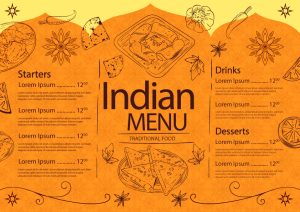
A restaurant menu that features a harmonious blend of light orange and yellow hues can create a visually stunning and memorable experience for customers.
These bright, warm colours can evoke a sense of positivity and optimism, elevating the overall mood and atmosphere of the restaurant.
Additionally, these colours have been shown to stimulate the appetite, making customers more inclined to order additional dishes.
The use of light hues can also lend an air of spaciousness and organization to the menu, resulting in a less cluttered and more navigable design.
Café Vs Restaurant: Understanding The Difference
The dynamic interplay of orange and yellow hues can evoke a feeling of vibrancy and vitality, particularly suitable for casual or family-oriented restaurants.
The subtle incorporation of playful typography or tantalizing food photography can further enhance the overall appeal of the menu design.
Ultimately, a restaurant menu card with a balanced combination of light orange and yellow hues can create a unique and uplifting dining experience for customers, leaving a lasting impression and fostering customer loyalty.
Restaurant Management System – Free Demo
5. Restaurant Menu Card Design With Dark and Light Brown Hues With Horizontal Stripe Patterns
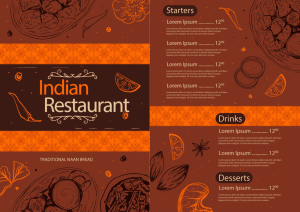
A well-crafted menu featuring a harmonious blend of dark and light brown hues, accentuated by horizontal stripe patterns, can contribute to a unique and welcoming atmosphere in a restaurant.
The rich and warm tones of brown evoke feelings of comfort, class, and refinement, while the addition of stripes adds a sophisticated touch that captures the attention of the customer.
The resulting ambiance is one of comfort and refinement, which can be instrumental in creating a relaxed and enjoyable dining experience.
By investing in an expertly designed menu, a restaurant can enhance the overall customer experience and create a lasting impression that resonates long after the meal has ended.
Restaurant POS System – Free Demo
6. Restaurant Menu Card Design With White or Cream Background with Brown Fonts
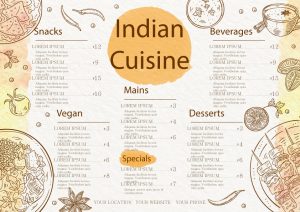
A restaurant menu card featuring a neutral white or cream background with elegant brown fonts and subtle pale colour designs can exude an understated, refined aesthetic that elevates the dining experience for the customer.
The minimalist approach to the menu design allows the menu items to take center stage, while the brown font imbues a sense of warmth and sophistication, creating a feeling of comfort and familiarity.
The pale colour designs provide a tasteful visual interest without overwhelming the customer, maintaining a sense of understated elegance.
This type of menu design can be particularly effective for restaurants that prioritize a simple, classic, and timeless approach to their cuisine, as it conveys an unassuming, yet refined style that aligns with the restaurant’s values.
Ultimately, a well-crafted menu with a clean and straightforward design can serve as a subtle yet impactful introduction to the dining experience and contribute to a positive overall impression.
Restaurant Billing System – Free Demo
7. Restaurant Menu Card Design With Dark and Light Brown Colour With An Enticing Restaurant Emblem
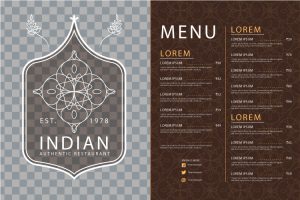
A restaurant menu card designed with a blend of dark and light brown hues, coupled with an enticing restaurant emblem on the front cover, can have an alluring effect on customers.
The interplay of warm and inviting brown hues creates an atmosphere of comfort and relaxation, while the emblem adds a touch of elegance and serves as a powerful representation of the restaurant’s unique identity.
By incorporating a simple menu design, customers can easily navigate through the menu and make informed decisions about their meal selections.
Such a sophisticated and well-executed menu design has the potential to enhance the overall dining experience, leaving a positive and lasting impression on the customer.
Restaurant POS System – Free Demo
8. Restaurant Menu Card Design With a Cream Background and Dark Blue Colour Scheme
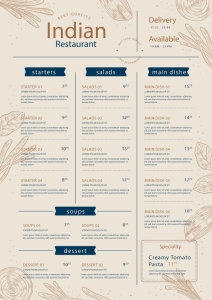
A restaurant menu card design that utilizes a simplistic approach with a cream background and dark blue colour scheme can create an elegant and sophisticated aesthetic that is sure to impress customers.
The cream background provides a clean and unobtrusive backdrop, allowing the menu items to be the focal point of the design.
The use of dark blue colour adds a touch of refinement and luxury, creating an air of sophistication that can elevate the dining experience.
6 Tips To Grow Restaurant Online Food Delivery Sales In 2023
The contrast between the two colours also provides a visual hierarchy that allows customers to easily navigate the menu.
This design can be particularly effective for restaurants that specialize in traditional and timeless cuisine, as the simplicity of the design can evoke a sense of calm and relaxation, while also instilling a sense of confidence in the establishment’s reputation.
Overall, a well-crafted menu design is a critical aspect of the dining experience, and the use of a cream background and dark blue colour scheme can be an excellent choice for creating an elegant and memorable menu design.
Restaurant Billing Software – Free Demo
9. Restaurant Menu Card Design With White Fonts Against A Lustrous Black Background
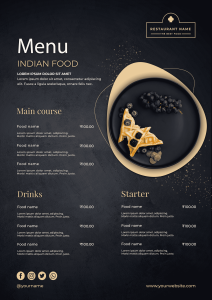
A menu design featuring crisp, white lettering set against a deep, lustrous black background can lend an air of refinement and sophistication to a restaurant.
The stark contrast between the white text and black background provides a dramatic visual impact, drawing the customer’s attention to the menu items.
Furthermore, strategically placed images of the restaurant’s signature dishes can serve as a visual enticement, adding interest and helping to guide the customer’s selection.
This type of menu design can be especially effective for high-end or upscale dining establishments looking to create a sense of luxury and opulence.
Ultimately, a well-designed menu can elevate the dining experience, and the combination of white lettering against a dark, shiny black background can leave a lasting impression on the customer.
Restaurant POS Billing System – Free Demo
10. Restaurant Menu Card Design With Vibrant Pink Background
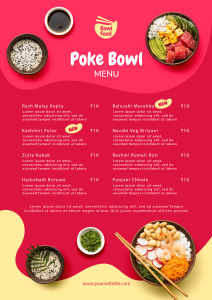
A restaurant menu card with a vibrant pink backdrop can evoke a sense of exhilaration and generate a heightened feeling of enthusiasm.
The strategic use of bright hues can be a powerful tool in capturing the customer’s attention and leaving an indelible impression.
Incorporating depictions of the restaurant’s signature dishes can provide a more compelling visual representation and encourage patrons to try the featured items.
The visual cues on the menu can be a potent catalyst for piquing the customer’s appetite and increasing their interest in exploring the available options.
This approach can be especially effective for restaurants seeking to cultivate a lively and effervescent ambiance.
However, it is important to exercise restraint when using such bold colour schemes as overuse of vibrant shades may prove distracting and overpowering to the customers.
In conclusion, a well-executed menu design featuring an arresting pink background and enticing visual imagery can elevate the dining experience and create a lasting impression on the customer.
Restaurant Management System – Free Demo
11. Restaurant Menu Card Design With Bright and Light Green Colours
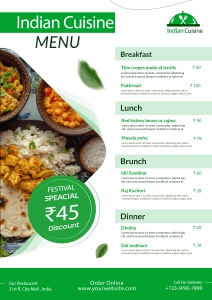
A restaurant menu card featuring a mixture of bright and light green colours can evoke a sense of invigoration and vibrancy among customers.
The use of green as the primary colour can symbolize nature, growth, and renewal, which can appeal to customers who value freshness and sustainability in their food choices.
Restaurant Scent Marketing: A Unique Way To Grow Customer-Base
Additionally, including an image of the restaurant’s best-selling dish on the menu can serve as an eye-catching visual cue to entice customers to order that particular item.
Such imagery can represent the dish in a way that stimulates the customer’s appetite and inspires them to try it.
This type of design can be particularly effective for restaurants that prioritize the use of fresh, locally-sourced, and healthy ingredients.
Overall, a well-designed menu with the mixture of bright and light green colours and an enticing image can help create a memorable and positive dining experience for the customer.
POS And Billing Software For Restaurant – Free Demo
12. Restaurant Menu Card Design In Monochrome
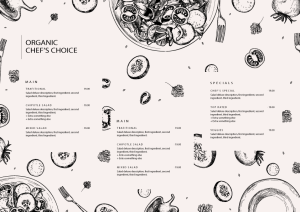
A monochromatic restaurant menu card design with a minimalist and understated aesthetic can offer a sophisticated and refined option for restaurant owners seeking a subdued, yet chic design.
The use of black and white tones can evoke a sense of timeless and understated elegance, while also providing clear and legible typography that is easy to navigate.
The absence of vibrant colours also allows the menu items to stand out in a more prominent and clear manner, providing customers with a seamless and intuitive browsing experience.
This type of design can be particularly effective for establishments that feature classic and traditional dishes that do not require extensive descriptions or embellishments.
Ultimate Guide To Restaurant Interior Design In India In 2023
Moreover, the simplicity of the design can foster a serene and tranquil ambiance, allowing patrons to fully immerse themselves in the dining experience.
Overall, a well-designed menu is an integral aspect of the dining experience, and this black and white restaurant menu design offers a tasteful and minimalist approach that is both elegant and user-friendly.
Conclusion
In conclusion, a restaurant menu design is something that can do wonders if curated precisely. We hope this article helped you select the right restaurant menu design for your restaurant.
Moreover, this article is written by content experts at Billberry that is a leading Restaurant ERP software helping small and medium sized restaurant outlets as well as large franchise businesses in the F&B sector to upscale their business operations right from procurement and production to customer engagement! Contact us today to book a free demo!
Restaurant Management System – Free Demo







